 W
WThe 1936–1939 Arab revolt in Palestine, later came to be known as The Great Revolt or The Great Palestinian Revolt, was a nationalist uprising by Palestinian Arabs in Mandatory Palestine against the British administration of the Palestine Mandate, demanding Arab independence and the end of the policy of open-ended Jewish immigration and land purchases with the stated goal of establishing a "Jewish National Home". The dissent was directly influenced by the Qassamite rebellion, following the killing of Sheikh Izz ad-Din al-Qassam in 1935, as well as the declaration by Hajj Amin al-Husseini of 16 May 1936 as 'Palestine Day' and calling for a General Strike. The revolt was branded by many in the Jewish Yishuv as "immoral and terroristic", often comparing it to fascism and Nazism. Ben Gurion, however, described Arab causes as fear of growing Jewish economic power, opposition to mass Jewish immigration and fear of the English identification with Zionism.
 W
WThe Ariostazo occurred on August 25, 1939, and was a brief revolt of the Tacna artillery regiment, led by General Ariosto Herrera, in what turned out to be a non-violent attempt against the government of Chilean President Pedro Aguirre Cerda.
 W
WThe Baltic Sea Campaigns were conducted by Axis and Allied naval forces in the Baltic Sea, its coastal regions, and the Gulf of Finland during World War II. After early fighting between Polish and German forces, the main combatants were Germany and Finland, opposed by the Soviet Union. Sweden's navy and merchant fleet played important roles, and the British Royal Navy planned Operation Catherine for the control of the Baltic Sea and its exit choke point into the North Sea.
 W
WThe Battle of Petsamo was fought between Finnish and Soviet troops in the area of Petsamo in the far north of Finland in 1939 and 1940. The Finnish troops were greatly outnumbered but managed to contain the Soviet troops due to the extreme terrain and weather.
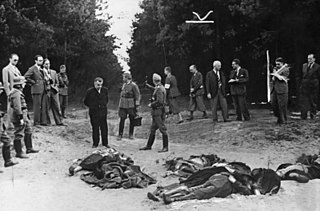 W
WBloody Sunday was a sequence of violent events that took place in Bydgoszcz, a Polish city with a sizable German minority, between 3 and 4 September 1939, during the German invasion of Poland.
 W
WThe Battle of Čajánek's barracks was a confrontation between the Czechoslovak and German armies, which took place on 14 March 1939 in the course of the German occupation of Czechoslovakia. Together with a clash which allegedly took place at Moravská Třebová, this was the only known Czechoslovak active resistance to the German Army during the occupation of Bohemia and Moravia in March 1939. The battle took place simply because German forces cut Czechoslovak communication lines too early and army unit stationed in the barracks thus didn't receive general order to surrender.
 W
WThe Cartagena uprising took place 4–7 March 1939 during the Spanish Civil War. The troop transport SS Castillo de Olite was sunk during the revolt.
 W
WThe Catalonia Offensive was part of the Spanish Civil War. The Nationalist Army started the offensive on 23 December 1938 and rapidly conquered Republican-held Catalonia with Barcelona. Barcelona was captured on 26 January 1939. The Republican government headed for the French border. Thousands of people fleeing the Nationalists also crossed the frontier in the following month, to be placed in internment camps. Franco closed the border with France by 10 February 1939.
 W
WThe First Battle of Changsha was the first of four attempts by Japan to take the city of Changsha (長沙市), Hunan (湖南省), during the second Sino-Japanese War. It was the first major battle of the war to fall within the time frame of what is widely considered World War II.
 W
WThe bombing of Chongqing, from 18 February 1938 to 23 August 1943, was part of a terror bombing operation conducted by the Imperial Japanese Army Air Service and Imperial Japanese Navy Air Service on the Chinese provisional capital of Chongqing and other targets in Sichuan, authorized by the Imperial General Headquarters.
 W
WThe Defence of the Reich is the name given to the strategic defensive aerial campaign fought by the Luftwaffe air arm of the combined Wehrmacht armed forces of Nazi Germany over German-occupied Europe and Nazi Germany during World War II. Its aim was to prevent the destruction of German civilians, military and civil industries by the Western Allies. The day and night air battles over Germany during the war involved thousands of aircraft, units and aerial engagements to counter the Allied strategic bombing campaign. The campaign was one of the longest in the history of aerial warfare and with the Battle of the Atlantic and the Allied Blockade of Germany was the longest of the war. The Luftwaffe fighter force defended the airspace of German-occupied territory against attack, first by RAF Bomber Command and then against the United States Army Air Forces (USAAF).
 W
WThe final offensive of the Spanish Civil War took place between 26 March and 1 April 1939, towards the end of the Spanish Civil War. On 5 March 1939, the Republican Army, led by Colonel Segismundo Casado and the politician Julián Besteiro, rose against the Socialist prime minister Juan Negrín, and formed a military junta, the National Defence Council to negotiate a peace deal. Negrín fled to France but the Communist troops around Madrid rose against the junta, starting a civil war within the civil war. Casado defeated them and started peace negotiations with the Nationalists. Francisco Franco, however, was prepared to accept only an unconditional surrender. On 26 March, the Nationalists started a general offensive and by 31 March, they controlled all of Spanish territory. Hundreds of thousands of Republicans were arrested and interned in concentration camps.
 W
WThe German occupation of Czechoslovakia (1938–1945) began with the German annexation of Sudetenland in 1938, continued with the March 1939 invasion of the Czech lands and creation of the Protectorate of Bohemia and Moravia, and by the end of 1944 extended to all parts of the former Czechoslovakia.
 W
WThe Hainan Island Operation, or Kainan-tō sakusen (海南島作戦) in Japanese, was part of a campaign by the Empire of Japan during the Second Sino-Japanese War to blockade the Republic of China and prevent it from communicating with the outside world as well as to prevent imports of much-needed arms and materials.
 W
WThe Battle of the Heligoland Bight was the first "named" air battle of the Second World War, which began the longest air campaign of the war, the Defence of the Reich. On 3 September 1939, the United Kingdom declared war on Nazi Germany after the German invasion of Poland, which started the European War. The British did not assist Poland by land or sea but RAF Bomber Command flew several missions against German targets. A number of these air raids were directed at Kriegsmarine warships in German ports to prevent their use in the Battle of the Atlantic. With the front lines static between September 1939 and May 1940, a period known as the "Phoney War" set in, with little fighting on land or in the air.
 W
WThe invasion of Poland marked the beginning of World War II. The German invasion began on 1 September 1939, one week after the signing of the Molotov–Ribbentrop Pact between Germany and the Soviet Union, and one day after the Supreme Soviet of the Soviet Union had approved the pact. The Soviets invaded Poland on 17 September. The campaign ended on 6 October with Germany and the Soviet Union dividing and annexing the whole of Poland under the terms of the German–Soviet Frontier Treaty.
 W
WThe Italian invasion of Albania was a brief military campaign by the Kingdom of Italy against the Albanian Kingdom. The conflict was a result of the imperialist policies of Italian dictator Benito Mussolini. Albania was rapidly overrun, its ruler, King Zog I, forced into exile in neighbouring Greece, and the country made part of the Italian Empire as a protectorate in personal union with the Italian Crown.
 W
WThe Battles of Khalkhin Gol were the decisive engagements of the undeclared Soviet–Japanese border conflicts fought among the Soviet Union, Mongolia, Japan and Manchukuo in 1939. The conflict was named after the river Khalkhin Gol, which passes through the battlefield. In Japan, the decisive battle of the conflict is known as the Nomonhan Incident after Nomonhan, a nearby village on the border between Mongolia and Manchuria. The battles resulted in the defeat of the Japanese Sixth Army.
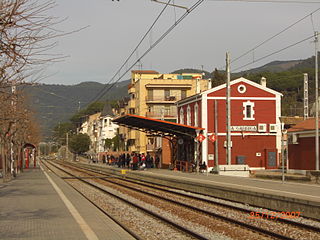 W
WThe Bombing of La Garriga where a series of Nationalist air raids which took place at La Garriga, Barcelona province in Catalonia between 28 and 29 January 1939 during the Spanish Civil War. At least 13 civilians were killed in the bombings.
 W
WThe Battle of Łódź was fought on September 6–8, 1939, between the armies of Poland and Nazi Germany in World War II during the Invasion of Poland. The Polish forces were led by General Juliusz Rómmel.
 W
WThe Battle of Menorca took place in Menorca between the 7 and 9 February 1939 during the Spanish Civil War.
 W
WThe Pacification of Manchukuo was a Japanese anti-insurgency campaign during the Second Sino-Japanese War to suppress any armed resistance to the newly established puppet state of Manchukuo from various anti-Japanese volunteer armies in occupied Manchuria and later the Communist Northeast Anti-Japanese United Army. The operations were carried out by the Imperial Japanese Kwantung Army and the collaborationist forces of the Manchukuo government from March 1932 until 1942, and resulted in a Japanese victory.
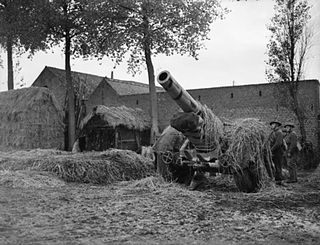 W
WThe Phoney War was an eight-month period at the start of World War II, during which there was only one limited military land operation on the Western Front, when French troops invaded Germany's Saar district. The Phoney period began with the declaration of war by the United Kingdom and France against Nazi Germany on 3 September 1939, and ended with the German invasion of France and the Low Countries on 10 May 1940. Although there was no large-scale military action by Britain and France, they did begin some economic warfare, especially with the naval blockade, and shut down German surface raiders. They created elaborate plans for numerous large-scale operations designed to cripple the German war effort. These included opening an Anglo-French front in the Balkans, invading Norway to seize control of Germany's main source of iron ore and a strike against the Soviet Union, to cut off its supply of oil to Germany. Only the Norway plan came to fruition, and it was too little too late in April 1940.
 W
WThe Battle of the River Plate was the first naval battle in the Second World War and the first one of the Battle of the Atlantic in South American waters. The German heavy cruiser Admiral Graf Spee had sailed into the South Atlantic two weeks before the war began, and had been commerce raiding after receiving appropriate authorisation on 26 September 1939. One of the hunting groups sent by the British Admiralty to search for Admiral Graf Spee, comprising three Royal Navy cruisers, HMS Exeter, Ajax and Achilles, found and engaged their quarry off the estuary of the River Plate close to the coast of Uruguay and Argentina in South America.
 W
WThe S-Plan or Sabotage Campaign or England Campaign was a campaign of bombing and sabotage against the civil, economic and military infrastructure of the United Kingdom from 1939 to 1940, conducted by members of the Irish Republican Army (IRA). It was conceived by Seamus O'Donovan in 1938 at the request of then IRA Chief of Staff Seán Russell. Russell and Joseph McGarrity are thought to have formulated the strategy in 1936.
 W
WThe Saar Offensive was a French ground invasion of Saarland, Germany, during the early stages of World War II, from 7 to 16 September 1939. The plans called for roughly 40 divisions, including one armored division, three mechanised divisions, 78 artillery regiments and 40 tank battalions to assist Poland, which was then under invasion, by attacking Germany's understrength western front. Although 30 divisions advanced to the border, the assault never happened. When the quick victory in Poland allowed Germany to reinforce its lines with homecoming troops, the offensive was stopped. The French forces eventually withdrew amid a German counter-offensive on 17 October.
 W
WThe Slovak invasion of Poland occurred during Germany's invasion of Poland in September 1939. The recently created Slovak Republic joined the attack, and the Slovak Field Army Bernolák contributed over 50,000 soldiers in three divisions. As the main body of the Polish forces were engaged with the German armies farther north of the southern border, the Slovak invasion met only weak resistance and suffered minimal losses.
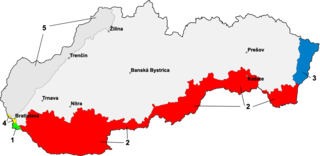 W
WThe Slovak–Hungarian War, or Little War, was a war fought from 23 March to 31 March 1939 between the First Slovak Republic and Hungary in eastern Slovakia.
 W
WThe Soviet invasion of Poland was a military operation by the Soviet Union without a formal declaration of war. On 17 September 1939, the Soviet Union invaded Poland from the east, sixteen days after Germany invaded Poland from the west. Subsequent military operations lasted for the following 20 days and ended on 6 October 1939 with the two-way division and annexation of the entire territory of the Second Polish Republic by Nazi Germany and the Soviet Union. This division is sometimes called the Fourth Partition of Poland. The Soviet invasion of Poland was indirectly indicated in the "secret protocol" of the Molotov–Ribbentrop Pact signed on 23 August 1939, which divided Poland into "spheres of influence" of the two powers and questioned the future existence of the Polish state.
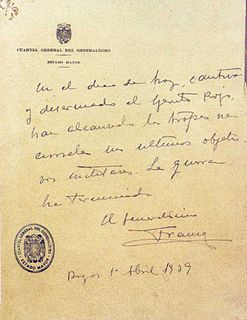 W
WThis article covers the Spanish Civil War in the period from the start of 1938 to the end of 1939. For a historical context, see Timeline of Spanish history#20th century.
 W
WThe Battle of Suixian–Zaoyang, also known as the Battle of Suizao was one of the 22 major engagements between the National Revolutionary Army (NRA) and Imperial Japanese Army (IJA) during the Second Sino-Japanese War. The Japanese launched a major two-pronged offensive that captured many cities and towns. However, their failure to defend against a series of coordinated Chinese counter-attacks forced them to completely withdraw, resulting in territorial control returning to the original status quo.
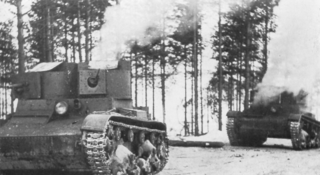 W
WThe Battle of Tolvajärvi was fought on 12 December 1939 between Finland and the Soviet Union. It was the first large offensive victory for the Finns in the Winter War.
 W
WThe Battle of Tuchola Forest was one of the first battles of World War II, during the 1939 invasion of Poland. The battle began 1 September and ended 5 September with a major German victory. Thanks to poor Polish command and control, as well as German numerical and tactical superiority, the Germans managed to cripple Poland's Army Pomerania and, by breaking through the Polish Corridor, to connect mainland Germany with East Prussia.
 W
WThe Battle of Valsequillo, also known as Battle of Peñarroya, was a diversionary Republican offensive which took place in the Sierra Morena area in southern Extremadura and the north of Andalusia between 5 January and 4 February 1939 during the Spanish Civil War. The main goal of the offensive was to distract forces from the Nationalist offensive against Catalonia, but after having occupied 500 square kilometers the Republican advance was stopped and all the territorial gains were lost to a Nationalist counteroffensive.
 W
WThe Wawer massacre refers to the execution of 107 Polish civilians on the night of 26 to 27 December 1939 by the Nazi German occupiers of Wawer, Poland. The execution was a response to the deaths of two German NCOs. 120 people were arrested and 114 shot, of whom 7 survived.
 W
WThe Battle of Westerplatte was one of the first battles of the German invasion of Poland, marking the start of the World War II in Europe.
 W
WThe Winter War was a war between the Soviet Union (USSR) and Finland. It began with a Soviet invasion of Finland on 30 November 1939, three months after the outbreak of World War II, and ended three and a half months later with the Moscow Peace Treaty on 13 March 1940. Despite superior military strength, especially in tanks and aircraft, the Soviet Union suffered severe losses and initially made little headway. The League of Nations deemed the attack illegal and expelled the Soviet Union from the organisation.
 W
WWorld War II, also known as the Second World War, was a global war that lasted from 1939 to 1945. It involved the vast majority of the world's countries—including all the great powers—forming two opposing military alliances: the Allies and the Axis. In a state of total war, directly involving more than 100 million personnel from more than 30 countries, the major participants threw their entire economic, industrial, and scientific capabilities behind the war effort, blurring the distinction between civilian and military resources. World War II was the deadliest conflict in human history, resulting in 70 to 85 million fatalities, with more civilians than military personnel killed. Tens of millions of people died due to genocides, premeditated death from starvation, massacres, and disease. Aircraft played a major role in the conflict, including in strategic bombing of population centres, and the only uses of nuclear weapons in war.
 W
WThe Bombing of Xàtiva was an aerial bombing of the railway station of Xàtiva, Valencia Province, during the last phase of the Spanish Civil War. It was carried out on 12 February 1939 at the behest of Francisco Franco's nationalist government by the Aviazione Legionaria of its Fascist Italian allies.